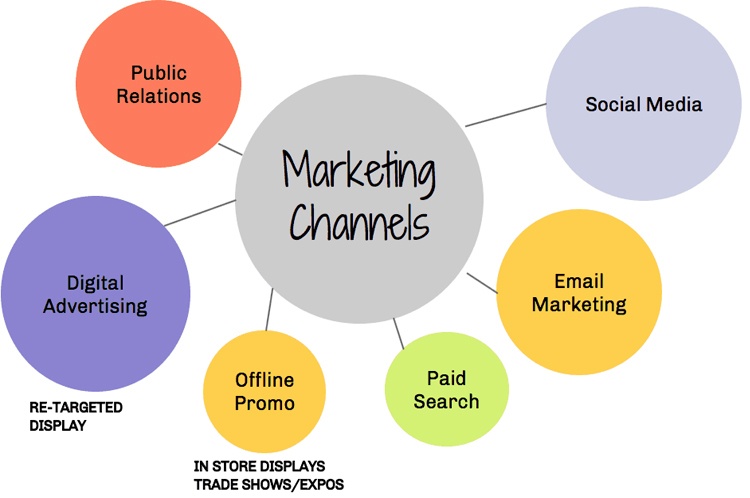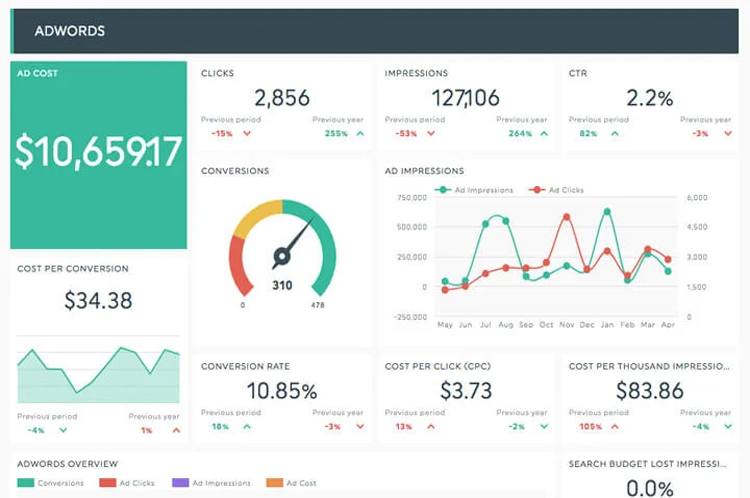In the hands of expert marketers, a digital competitive analysis has proven to be a helpful tool, but competitive analysis in internet marketing shouldn’t be too difficult for newbies. Understanding what you should be doing is the most significant component of competitive digital marketing analysis.
The most effective methods for conducting competitor analysis in digital marketing:
-
Make a list of the metrics you’ll be tracking.
First and foremost, you must choose the indicators you will track as part of your competitive research of their digital marketing plan. These are the numbers you’ll be watching to see how they change over short and extended periods of time. You can better grasp what you should expect from your own digital marketing efforts by looking at the performance of your competitors.
- The following are some more digital marketing indicators to keep watch of:
- Social Media Following
- Post Engagement
- Website Traffic
- Keyword Rankings
Keep in mind that the changes in these measures are influenced by a variety of things, not only what your competitors are doing in their marketing campaigns. This is why factors like the alignment of their marketing claims with their real value proposition or rising market demand can all have a significant impact on important indicators you’re tracking.
-
Select Your Marketing Channels
This is a highly suggested stage that will help you prepare for your competitor analysis. The point is before you undertake the analysis, don’t feel obligated to know all there is to know about every competition on the market. As you conduct your study, you will come across more competitive organizations. However, you will be better prepared if you are able to compile a somewhat accurate list of competitors ahead of time.
Consider this: having something is preferable to having nothing. It’s best to build even a shortlist if you have at least a hazy concept of who your competitors are. Once you’ve started your study, you’ll be able to focus your efforts on evaluating these businesses or entrepreneurs more thoroughly. You will also spend less time evaluating the wrong people and firms as a result of this.
-
Compile a Competitor List
The second step is to carefully select your marketing channels. Because digital marketing is such a broad term, it encompasses a wide range of aspects that come together to form what we know as online marketing channels. Many of these channels (or platforms) have the potential to cross paths. They can be utilized to cross-promote each other as well. However, at the end of the day, each of them has a distinct goal, target audience, skills, and so on.
Social networking platforms, email marketing, sponsored ads, content marketing, video marketing, and online traffic are all popular digital marketing channels. Influencer marketing is a type of social media marketing; sponsored ads are frequently associated with the concept of online traffic, and video marketing is sometimes included in content marketing. When analyzing your competitors’ methods, you may wish to focus more on one or more of these channels, depending on your own digital marketing ambitions.
(Learn How to Compile a Competitor List with DIDM.)
-
Produce Your Own Report
Making your own report is another thing you can do ahead of time to better prepare for digital marketing competitor analysis. This report should ideally cover your own organization and provide you with a more in-depth look at it. You won’t be able to create a report like this if you haven’t launched a business yet and are conducting competitor analysis to prepare for doing so. However, if you are able to complete the report, it will serve two objectives.
Making your own report is another thing you can do ahead of time to better prepare for your digital marketing competitor analysis. This report should, ideally, cover your own organization and give you a more detailed look at it. You won’t be able to create a report like this if you haven’t started a business yet and are conducting competitor analysis as part of your preparation for doing so. However, if you are able to complete the report, it will be useful for two reasons:
To begin, you’ll have a model of how your competitor reports should appear. By evaluating what you accumulated about yourself, you’ll already have a template to assist you to gather information on others. Second, you will have a far greater understanding of your company and will be able to recognize all of its strengths and shortcomings. You’ll be able to compare your business to other brands and businesses as well.
(Learn how to make a report with the help of digital marketing)
-
Think about outsourcing.
Outsourcing is not popular with all types of businesses, but it can be extremely beneficial to those who are just getting started as well as those who have been in business for a long time. Basically, outsourcing allows you to save money, have more time for import duties, get through a crisis, and so on. Furthermore, if you know how to utilize it appropriately, it can assist you with rival research and analysis.
For example, a custom writing reviews site like Online Writers Rating can help you find a professional writer. The writers can be picked based on their reputation, talents, knowledge, and prices, among other factors. Once you’ve found the ideal writer for you, they’ll conduct the essential research and competitive analysis. Instead of you having to undertake all of these duties, they may prepare a detailed report about your competition.
-
Evaluate Marketing and Marketing Efforts
The distinction between marketing and initiatives is one that almost every marketer, business owner, and entrepreneur seems to overlook. Even if one of your competitors advertises that their clothes are made entirely of cotton, the reality may be that many of their garments are only 70% cotton, with only a few remaining pieces being 100% cotton.
The distinction between marketing and efforts is this (or claims and reality). You will be able to better assess the true situation of the market and determine whether your competitors are honest with your customers if you investigate this difference for your competition study. Because some companies thrive by neglecting such nuances about their products, it’s critical to figure out what your niche does and whether you want to follow suit.
The Ordinary, a Canadian skincare company, is a fantastic illustration of this. Their products don’t come in flashy packaging; instead, they’re basically white with black text, and that’s what makes them stand out (which, by the way, kind of revolutionized the market a few years ago). They were forthright in admitting that the majority of skincare products contain unneeded chemicals. Rather than being identical, they merely use the most essential materials.
-
Examine the SEO strategies of your competitors.
Though your research will mostly focus on a variety of marketing indicators, it’s important to pay close attention to their SEO strategy. You may do this with a variety of competition analysis tools, which are similar to the tools you use to monitor your own SEO analytics in campaigns you launch. Here are a few things to keep in mind:
- Website Visits: On average, how many people visit their website? Is there any feedback on their website? What keywords do they utilize, and how high does their website rank for these phrases in search results? Is their website entirely in English or does it also include other languages?


- Performance on social media: On which platforms do they have accounts, and how many followers do they have? On average, how many likes, comments, and reposts do their posts receive? What hashtags do they utilize, and how prominent are they in search results for these hashtags?
-
Take a look at the people in the room.
Looking at your competitors’ performance isn’t enough; you need also look at their audience. You will be able to determine your own possible target audience by studying who they are. You’ll also be able to compare their audience to yours to determine if you have much in common, as well as what differences you have.
When researching your competitors’ audiences, start with the basics (e.g. age, gender, sexuality, location, education, occupation, family status). Then you may get into more detailed and subtle information (e.g. interests, strengths, weaknesses, fears, needs, dreams, religious beliefs).
-
Conduct a traditional marketing audit
Traditional marketing isn’t included in digital marketing. However, the two are occasionally combined to increase campaign efficacy. This is why studying your competitors’ traditional marketing strategies might help you better understand what you can do for your own company.
Traditional marketing is also known for being quite effective and forceful. Direct-mail marketing, for example, is still widely utilized in the United States because it provides for immediate reaction and can compete with digital alternatives.
Final conclusions
Finally, you must base your final findings on the facts you have gathered about your competition. Have you gathered enough data? Are you pleased with the outcome? Is this what you expected or did you get a pleasant surprise? How unique are your campaigns in comparison to those of your competitors?
All of these questions must be answered honestly because they will assist you in better comprehending what your competitor analysis entails. Furthermore, you should update your digital marketing strategies to reflect current trends or employ more effective tactics.
Learn With DIDM For More Digital Marketing Strategies And Tactics.





